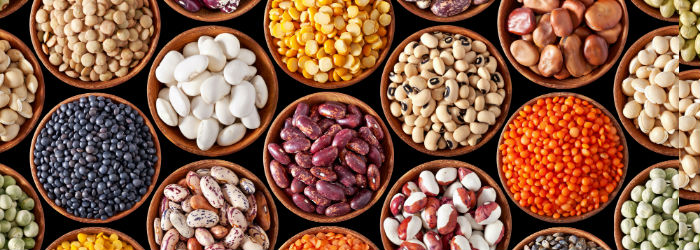Five Great Grains and Some Healthy Advice

In recent years it has become much easier to buy different grains, beans, and pulses. What used to be solely available from health food shops are to be found in most supermarkets, and in greater variety. They are typically high in protein, low in fat, and contain high levels of slowly digested and resistant starch and fibre. Here are three you may not be familiar with.
Chia
Chia is a member of the mint family and is grown for its seeds. It is native to Mexico and Guatemala. The word chia means oily and chia seeds are rich in omega-3. They also provide protein, fibre, antioxidants, soluble and insoluble fibre. Chia seeds have no flavour and can be added to muesli or bread mixes. Health food shops usually stock small packets.
Pearl barley
Pearl barley is barley with the outer layer of inedible husks removed, then polished to remove its bran layer. It has the very low GI value of 19 and is high in fibre. Barley that has not had its bran removed is called hulled, pot or Scotch barley; it is chewier than pearl barley and takes longer to cook.
Bulgar wheat
Bulgar wheat has a GI value of 48. It is usually made from durum wheat and is sold parboiled and dried, with most of its bran retained. It has a high nutritional value.
Freekeh
This is wheat, harvested when young and then roasted. It contains fibre and resistant starch. Whole grain freekeh has a GI of 43, cracked freekeh a GI of 55.
Buckwheat
Buckwheat is a member of the sorrel and rhubarb family. Commercially grown buckwheat comes largely from China. The large triangular seed of the plant is processed to make noodles and flour. Buckwheat flour is gluten free, high in fibre and contains many health-giving minerals. It has a strong, slightly bitter taste and a GI value of 54.
Although the omega-3 content of some seeds is very high, it is not as beneficial as the omega-3s derived from oily fish. The two most effective omega-3s, those responsible for healthy brain function, skin and eyes, are found primarily in fish. Seeds and grains are great, but oily fish is even better!







